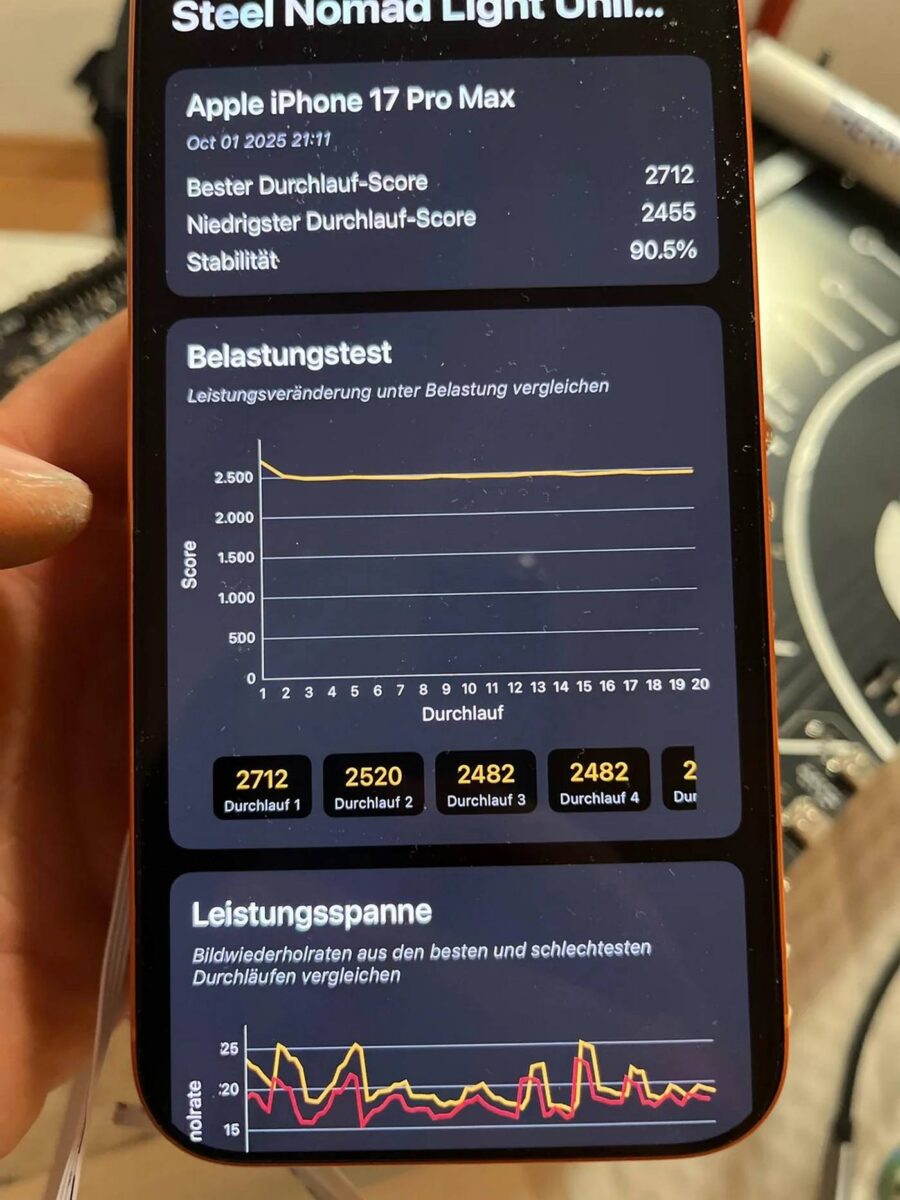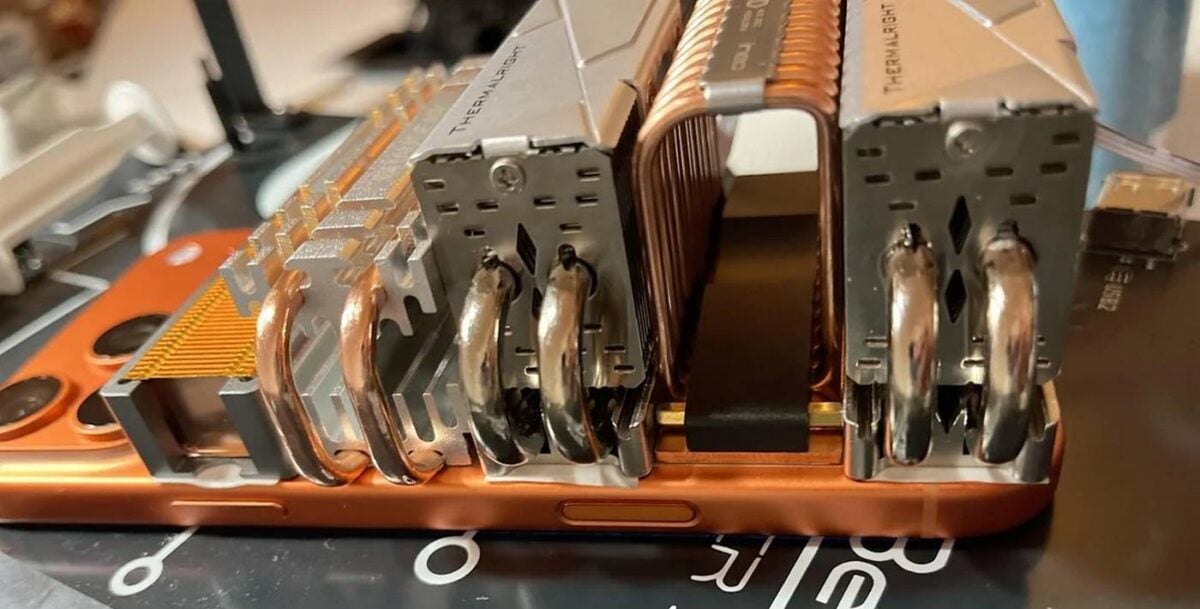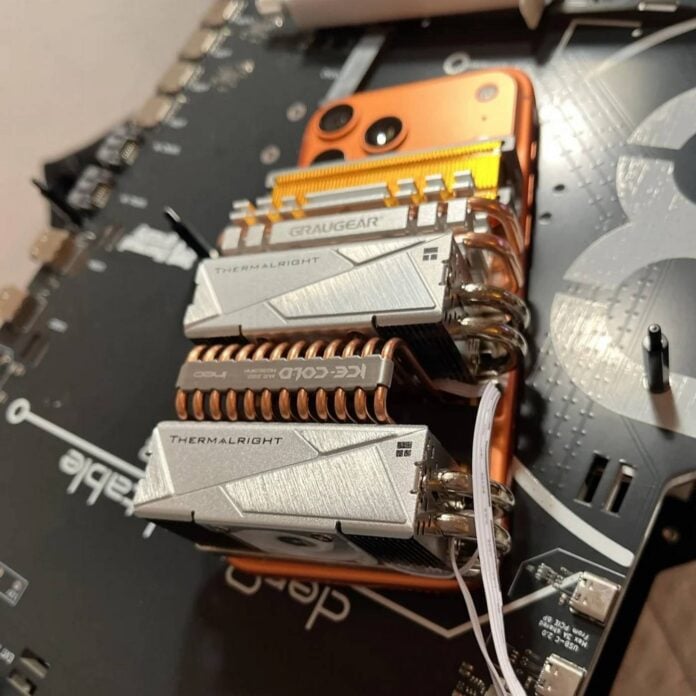A Reddit user going by the name T-K-Tronix has played Ripperdoc with his brand-new iPhone 17 Pro Max, turning it into a performance beast. The Redditor took M.2 SSD coolers they had lying around and slapped them behind Apple’s latest flagship. The results speak for themselves, as the phone manages to stay stable at higher frequencies under continuous load.
T-K-Tronix’s idea is simple, if M.2 coolers can handle the 20-ish watts of Gen 5 SSDs, it surely can manage the estimated 12W of the A19 Pro chip inside this iPhone. More so considering that T-K-Tronix used not one or two but five M.2 heatsinks at once, spread over the back side of the iPhone. Some even included running fans. Each one of these would put the phone’s built-in vapour chamber to shame.
Jokes aside, the iPhones 17 Pro and iPhone 17 Pro Max’s vapour chamber is a testament to the ingenuity of Apple’s engineers, which is able to maintain good performance without taking up a lot of space. This Frankenstein mod, on the other hand, makes those ruggedised phones look slim by comparison. Unpractical as it may be, this contraption netted some impressive results, with the Redditor reporting up to 21% higher scores in 3DMark Steel Nomad Light Unlimited, jumping from around 2,233 points to 2,712.

Most importantly, the iPhone’s performance remained consistent during this prolonged stress test, with 3DMark reporting 90% stability in this taxing benchmark. Though not apples to apples (no pun intended), GSM Arena’s test of the iPhone 17 Pro Max showed that in its default configuration the device continued losing performance through time when stressed in 3DMark Wild Life. After 20minutes, the performance ended up around 67%, far lower than today’s mod, which held things at 90% most of the time.

Synthetic GPU benchmarks are often thermal-limited; when the SoC reaches a certain temperature, the CPU/GPU frequency and voltage are reduced to protect the chip and, arguably, the user. Thus, adding a large surface area to dissipate the generated heat helps maintain a lower temperature, which in turn authorises the SoC to operate at higher clocks.
This goes to show that while effective for daily use, smartphones are forced to leave a lot of performance on the table to maintain their slim shape. With batteries and cameras fighting for space inside these pocket-sized devices, cooling is often relegated to second-class citizen status.
The good news is that you are not forced to use an over-the-top solution like T-K-Tronix. You can simply get one of those USB-fans that stick to the back of the phone, perhaps experiencing better cooling while costing less than five M.2 heatsinks.


